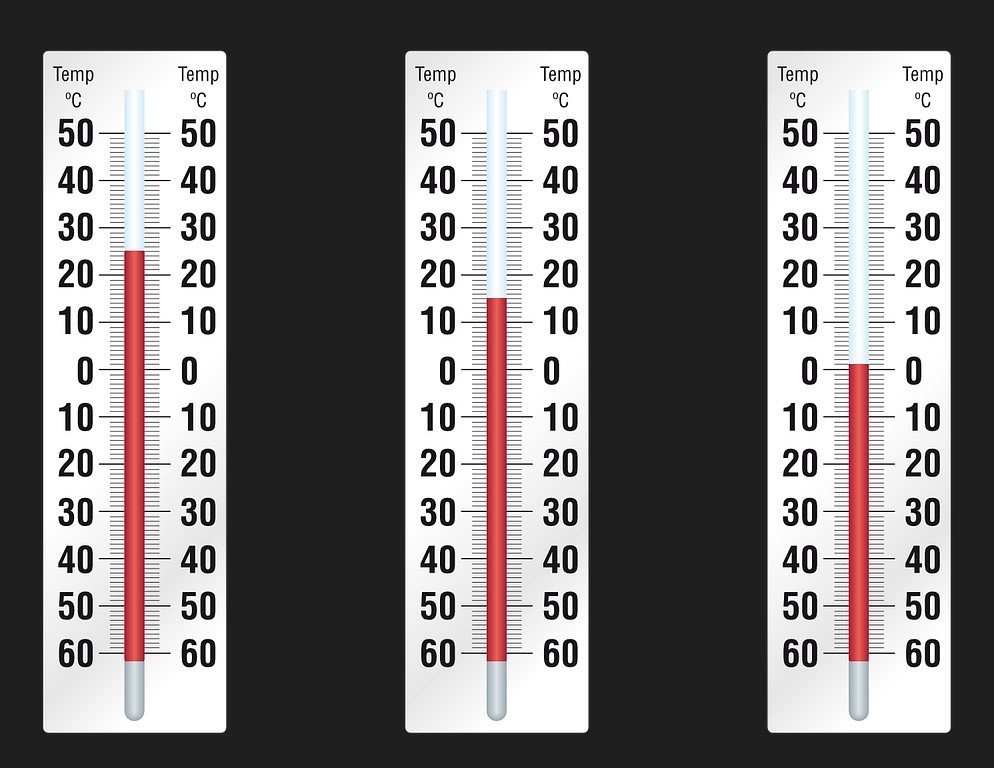With a wealth of experience in the health and wellness field, I can empathize with the discomfort and concern you might feel when your back hurts when you sneeze. This unexpected pain can leave you wondering about its root cause. This article will shed light on the reasons behind this issue, equipping you with the necessary knowledge to manage it more effectively.
Why does my back hurt when I sneeze? The primary reason is the sudden, forceful contraction of your muscles during a sneeze. This action can trigger back pain, particularly if there’s an existing condition like a muscle strain or herniated disc. Essentially, it’s your body reacting to a quick, intense movement it wasn’t prepared for. By understanding the mechanics of a sneeze and its effects on your back, you’ll be better equipped to handle and potentially prevent this pain. So, let’s dive deeper into this topic and discover ways to alleviate and control this discomfort.
What Happens to Your Back When You Sneeze?
When you sneeze, your body goes through a forceful and involuntary process that can sometimes be felt in your back. The sudden contraction of muscles, including those in your back, can lead to a momentary sharp pain or discomfort. This is particularly true if you have any pre-existing conditions related to your spine or back muscles. Understanding this process is the first step towards managing and preventing back pain when you sneeze.
The intensity of a sneeze can often catch us off guard. It’s not just a simple release of air from the lungs, but a complex bodily response that involves several muscles, including those in the abdomen, chest, and back. When these muscles contract forcefully, it can put pressure on the spinal nerves, leading to a sharp pain in the back. This is more likely to occur if you’re in an awkward position when you sneeze or if your muscles are already strained or tense.
According to a study published in the Journal of Neurosurgery: Spine, there’s a notable increase in spinal canal pressure during a sneeze. This increased pressure can exacerbate any existing issues in the back, leading to pain or discomfort. Learning about the mechanics of a sneeze and how it impacts your back can help you take steps to minimize associated pain.
The Role of Muscles in Sneezing
Sneezing is a complex physiological process that involves several groups of muscles in our body. It’s not just a mere reflex action, but an intricate mechanism that requires the coordination of numerous muscles. The muscles involved range from those in the respiratory system to the facial muscles, and even some in the abdominal area.
The process starts when an irritant enters the nasal passages, triggering a signal that goes to a specific part of the brain known as the sneeze center. This center then sends signals to the muscles responsible for the sneeze. The diaphragm contracts forcefully, followed by a rapid closure of the vocal cords which leads to a build-up of pressure in the lungs.
The muscles in the abdomen then contract, helping to push air out of the lungs at a high speed. Simultaneously, the muscles controlling the eyelids cause them to close, which is why we often shut our eyes when we sneeze. Finally, the facial muscles and those in the throat work together to direct the forced air through the nose and mouth, expelling the irritant. Understanding the role of muscles in sneezing highlights the complexity of this common, yet intricate bodily function.
Common Conditions Causing Back Pain during Sneezing
Sneezing can sometimes trigger or exacerbate back pain, which is often a symptom of underlying health conditions. Various conditions can cause this discomfort, ranging from minor muscle strain to more serious health issues.

Back Hurts When I Sneeze Causes and Solutions
One common condition that can cause back pain during sneezing is a herniated disc. The pressure exerted during a sneeze can strain the spine, causing a disc to bulge or rupture, leading to pain. Similarly, another condition called spinal stenosis, characterized by the narrowing of the spinal canal, can also cause pain during sneezing due to increased pressure on the nerves.
Muscle strains or sprains are another common cause of back pain when sneezing. Overstretching or tearing the muscles or ligaments in the back can lead to pain and discomfort, which can be intensified by the sudden, forceful nature of a sneeze.
In some cases, conditions like osteoporosis can also lead to back pain during sneezing. Osteoporosis weakens the bones, making them more susceptible to fractures. A forceful sneeze can sometimes be enough to cause a minor fracture in the weakened vertebrae, leading to acute pain.
While these are some of the common conditions, back pain can also be a symptom of more serious conditions such as tumors or infections. Therefore, persistent back pain, especially if it’s triggered or worsened by sneezing, should always be evaluated by a healthcare professional to rule out any serious underlying conditions.
Practical Techniques to Sneeze Without Hurting Your Back
Sneezing is an involuntary action, but there are ways to minimize its impact on your back. Understanding how your body position and movements can influence the pressure on your back during a sneeze is crucial. Here, we’ll discuss some practical techniques to help you sneeze without causing or exacerbating back pain.
How-to Steps:
- Maintain Good Posture: Always aim to keep your back straight, especially when you feel a sneeze coming. This can help distribute the force of the sneeze evenly across your body, reducing the strain on your back.
- Support Your Back: If possible, lean against a wall or sit down when you need to sneeze. This provides additional support for your back muscles and spine, decreasing the likelihood of pain.
- Bend Your Knees: When standing, try bending your knees slightly as you sneeze. This can help absorb some of the sneeze’s force, relieving pressure on your back.
- Turn Your Head: Turning your head to the side while sneezing can also help reduce the strain on your neck and upper back.
- Practice Controlled Sneezing: Try to control the force of your sneeze by keeping your mouth open. This can lessen the pressure in your chest and back, potentially reducing pain.
By incorporating these techniques into your daily life, you can help protect your back from the sudden, forceful contractions that occur during a sneeze. Remember, everyone’s body is different, so what works best for you might differ from what works for others. Experiment with these strategies and see which ones provide the most relief for you.
Over-the-Counter Remedies for Back Pain After Sneezing
Experiencing back pain after sneezing is quite common and can often be managed with over-the-counter (OTC) remedies. These remedies mainly include topical creams, oral medications, and heat or cold therapies which are easily accessible and don’t require a prescription.
Topical creams and ointments containing ingredients like menthol, camphor, or capsaicin can provide temporary relief by numbing the area and reducing inflammation. Oral non-prescription medications such as acetaminophen (Tylenol), ibuprofen (Advil), or naproxen (Aleve) can also help to alleviate pain and reduce inflammation.
Heat or cold therapy can be another effective OTC remedy. A cold pack can help to reduce inflammation and numb the painful area, while heat therapy can help to relax tense muscles and improve blood circulation, promoting healing.
It’s important to remember that these remedies are meant for temporary relief and should not replace medical advice. If back pain persists or worsens, it’s essential to seek professional medical help. Persistent back pain could be a sign of an underlying condition that requires proper diagnosis and treatment.
Exercises to Strengthen Your Back and Prevent Pain
Regular exercise is a great way to strengthen your back muscles, improve posture, and reduce the likelihood of experiencing pain when you sneeze. Incorporating specific exercises into your routine can help condition your body to handle the forceful contractions that occur during a sneeze more effectively. In this section, we’ll explore some exercises that can help bolster your back’s strength and resilience.
How-to Steps:
- Bridges: Lie flat on your back with your knees bent, feet flat on the floor, and arms by your sides. Lift your hips off the floor until your body forms a straight line from your shoulders to your knees. Hold this position for a few seconds before slowly lowering your hips back down.
- Bird Dog: Start on all fours, with your hands under your shoulders and your knees under your hips. Extend one arm out in front of you and the opposite leg behind you, keeping your body balanced and aligned. Hold this position for a few seconds before returning to the starting position and repeating with the opposite arm and leg.
- Superman: Lie face down on the floor with your arms extended in front of you. Lift your arms, chest, and legs off the ground as high as comfortable, engaging your back muscles. Hold this position for a few seconds before slowly lowering back down.
- Seated Rows: Using a resistance band or a rowing machine if you have access to one, sit with your legs extended in front of you. Pull the band or handles towards your waist while keeping your back straight and squeezing your shoulder blades together.
- Planks: Get into a push-up position but rest your weight on your forearms instead of your hands. Engage your core and maintain a straight line from your head to your heels. Hold this position for as long as comfortable.
By incorporating these exercises into your regular workout routine, you can help fortify your back and mitigate potential discomfort from sneezing. Keep in mind that it’s important to perform these exercises correctly and consistently for the best results. If you’re new to exercising or have any health concerns, it’s always a good idea to consult with a healthcare professional or a certified personal trainer before you start a new fitness regimen.
When to Consult a Doctor for Sneezing-Induced Back Pain
While occasional back pain after sneezing can be common and usually isn’t a cause for concern, there are certain circumstances under which medical attention should be sought. Persistent or severe back pain, whether it’s triggered by sneezing or not, can be a sign of an underlying health issue that needs to be addressed.
If back pain continues for more than a few days or is severe enough to interfere with daily activities, it’s time to consult a doctor. Other warning signs include pain that doesn’t improve with rest or over-the-counter remedies, pain that radiates down the legs, or pain accompanied by other symptoms such as fever, unexplained weight loss, or bladder or bowel problems.
Consultation with a healthcare professional becomes crucial if the person has a history of cancer, osteoporosis, steroid use, or excessive alcohol consumption, as these factors can increase the risk of serious spinal conditions. Similarly, if the pain onset was due to a traumatic event, like a fall or accident, immediate medical attention is necessary to rule out fractures or other injuries.
Remember, it’s always better to be safe and get symptoms checked out, especially when it comes to persistent or severe back pain. Early diagnosis and treatment can prevent the condition from worsening and can lead to better outcomes.
Conclusion
Throughout this article, we’ve explored the various factors that can cause back pain when you sneeze and offered practical solutions to manage and prevent this discomfort. Remember, understanding the mechanics of a sneeze and how it impacts your body is an essential first step towards alleviating the pain associated with it.
By incorporating the techniques and exercises we’ve discussed, you can strengthen your back, improve your posture, and potentially reduce the strain on your back when you sneeze. With persistence and patience, you can navigate this issue more effectively. So, the next time you feel a sneeze coming, remember these tips and give them a try. Who knows? You might just sneeze your way to a stronger back!
Frequently Asked Questions
[faq-schema id=”1295″]
















